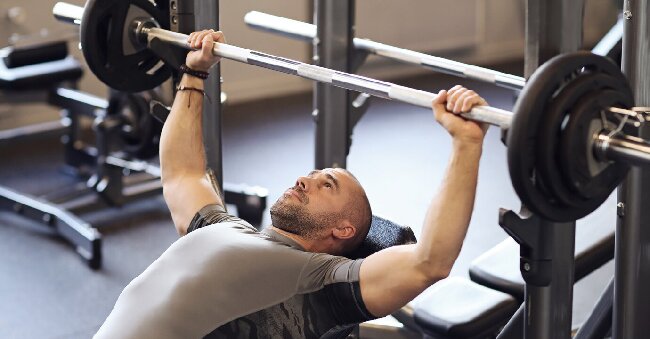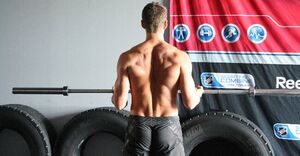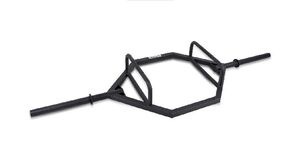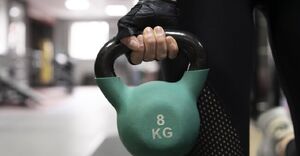
The Ultimate Guide to Smith Machine Exercises: From Deadlifts to Bench Presses
Are you looking to take your strength training to the next level? Look no further than the Smith Machine. In this comprehensive guide, we will explore everything you need to know about the Smith Machine – from how it works to its benefits and the different types of exercises you can do on it.
Whether you’re a beginner or a seasoned gym-goer, we’ll also cover how to properly perform Smith Machine exercises and common mistakes to avoid. Get ready to incorporate this versatile piece of equipment into your workout routine and maximize your gains.
What Is a Smith Machine?
A Smith Machine is a versatile piece of fitness equipment commonly found in gyms and fitness centers.
It is known for its guided vertical range of motion, which provides stability and safety during exercises such as squats, bench presses, and lunges. The design typically includes a barbell attached to a vertical track, allowing users to move the weight along a fixed path. This controlled movement is beneficial for beginners learning proper form and can also help seasoned lifters target specific muscle groups more effectively.
Incorporating a Smith Machine into your strength training routine can offer variety and challenge, assisting in overall muscle development and improved fitness outcomes.
How Does a Smith Machine Work?
The working mechanism of a Smith Machine involves a guided barbell attached to vertical tracks, allowing controlled movements in various exercises.
This design not only aids in maintaining a stable bar path, reducing the risk of injury due to unwanted lateral movements, but also offers users the ability to focus on muscle activation without the need to stabilize the weight independently.
To further ensure safety and form, proper equipment adjustments are crucial to align the user’s body mechanics correctly. Spotters play a vital role in offering support during challenging lifts and assisting in correcting form to prevent improper muscle engagement and potential strain.
What Are the Benefits of Using a Smith Machine?
The Smith Machine offers a multitude of advantages for fitness enthusiasts, including enhanced stability, targeted muscle engagement, and opportunities for progressive overload to support strength and muscle building goals.
Provides Stability and Safety
One of the key benefits of utilizing a Smith Machine is the built-in stability it offers during weightlifting exercises, reducing the risk of injury and allowing for focused muscle engagement.
The design of a Smith Machine assists users in maintaining proper form by guiding the barbell along a fixed vertical path, promoting controlled movements. This controlled motion not only helps in targeting specific muscle groups effectively but also plays a significant role in injury prevention. By encouraging users to focus on muscle stabilization throughout each exercise, the Smith Machine facilitates a safer workout environment. The safety features of the machine, such as adjustable safety catches, provide added protection in case of muscle fatigue or loss of control during lifts, ensuring a secure training experience.
Targets Specific Muscle Groups
The Smith Machine enables precise targeting of individual muscle groups, making it an ideal choice for isolating and strengthening specific areas of the body.
By adjusting the vertical and horizontal bar paths, users can emphasize various upper body muscles such as the chest, shoulders, and triceps with exercises like bench presses, shoulder presses, and tricep extensions. For lower body focus, movements like squats and lunges can be performed, engaging the quadriceps, hamstrings, and glutes effectively. Core activation can be achieved through exercises like variations of planks and Russian twists, aiding in building a strong and stable core.
The versatility of the Smith Machine allows for a wide range of isolation movements that promote muscle building and overall strength development.
Allows for Progressive Overload
The Smith Machine’s design facilitates progressive overload by enabling users to incrementally increase resistance and challenge their muscles for continuous strength gains and muscle development.
This piece of gym equipment allows individuals to adjust the weight plates easily, providing a range of options for intensifying their workouts. By strategically increasing the load in small increments, users can effectively target specific muscle groups, promoting hypertrophy and strength gains.
Incorporating variations in rep ranges, such as low reps for strength or high reps for endurance, contributes to workout progression and overall muscle adaptation. Optimizing rest periods between sets is crucial for muscle recovery and ensuring maximum effort in subsequent sets, further enhancing the effectiveness of the progressive overload principle on the Smith Machine.
What Are the Different Types of Smith Machine Exercises?
The range of Smith Machine exercises encompasses a diverse set of movements that target various muscle groups, including Deadlifts, Squats, Bench Presses, Shoulder Presses, Lunges, Rows, Calf Raises, and Bicep Curls.
Deadlifts
Deadlifts performed on a Smith Machine are effective compound movements that engage multiple muscle groups, such as the lower back, glutes, hamstrings, and forearms.
One of the key benefits of utilizing a Smith Machine for deadlifts is the enhanced focus on maintaining proper form. This equipment provides a guided vertical movement, aiding individuals in maintaining a straight back and preventing potential rounding of the spine. By ensuring the correct posture, the risk of injury is significantly reduced, allowing for safer and more effective workouts.
The Smith Machine promotes controlled weight distribution throughout the lift, which is crucial for targeting specific muscle groups and maximizing lower body strength gains.
Squats
Squats with a Smith Machine are effective for targeting the quadriceps, hamstrings, glutes, and core muscles while promoting proper form and stability during the movement.
Engaging your core during Smith Machine squats is crucial as it helps maintain a strong and stable foundation throughout the exercise. By focusing on core activation, you not only protect your lower back but also enhance your overall strength and balance.
Paying attention to proper depth ensures that you are effectively activating the lower body muscles, such as the quadriceps, hamstrings, and glutes, to maximize the benefits of the workout.
Experimenting with different foot positions on the Smith Machine can target various muscle groups, offering versatility in your squat routine.
Bench Presses
Bench Presses on a Smith Machine target the chest, shoulders, and triceps, providing a stable platform for pressing movements that enhance upper body strength.
Utilizing a Smith Machine for Bench Presses allows for a wider range of motion compared to traditional free weights, ensuring full activation of the pectoral muscles. The fixed bar path on the Smith Machine helps in maintaining proper form and reducing the risk of injury, especially for beginners or those working out without a spotter. By adjusting the resistance levels on the machine, individuals can easily progress in their strength training, targeting different muscle fibers for a well-rounded upper body workout.
Shoulder Presses
Shoulder Presses using a Smith Machine target the deltoids and triceps, promoting shoulder stability and muscle engagement throughout the pressing motion.
The beauty of Shoulder Presses on a Smith Machine lies in the controlled movement it offers, allowing for proper form and muscle isolation. By adjusting the seat height and grip width, you can emphasize different parts of the shoulder muscles, ensuring a well-rounded workout. Engaging your core for stability, the Smith Machine helps in maintaining a vertical pressing path, minimizing the risk of injury. Remember to focus on a full range of motion to fully activate the deltoids and maximize the benefits of this compound exercise.
Lunges
Lunges performed on a Smith Machine target the quadriceps, hamstrings, and glutes while enhancing balance and stability through controlled lower body movements.
Maintaining proper alignment during Smith Machine lunges is crucial. Ensure your front knee stays directly above your ankle as you lower your body down, preventing it from going past your toes.
Optimal step length involves taking a big enough stride so that both knees are at 90-degree angles when lowering into the lunge. Good knee tracking keeps the knee of your back leg from collapsing inwards, promoting muscle engagement in the outer thigh and glutes.
Variations like reverse lunges and walking lunges can further challenge the lower body muscles and improve overall balance.
Rows
Rows on a Smith Machine engage the back, biceps, and forearms, promoting upper back strength and muscle development through controlled rowing movements.
Focusing on proper scapular retraction during rows on a Smith Machine is crucial for maximizing back muscle activation. By consciously pulling the shoulder blades together and down throughout the movement, individuals can target the key muscles in the upper back more effectively.
Experimenting with different grip variations, such as overhand, underhand, or close grip, can further diversify the workout and enhance grip strength. This exercise not only builds a strong and defined back but also contributes to overall functional fitness and postural improvement.
Calf Raises
Calf Raises using a Smith Machine target the calf muscles, aiding in calf development and strength enhancement through controlled raising and lowering motions.
This exercise proves to be highly effective in isolating the calf muscles efficiently, allowing for a greater focus on enhancing calf strength and muscle definition. By adjusting the foot positioning on the Smith Machine and experimenting with different stances, individuals can target specific areas of the calf such as the soleus and gastrocnemius. Varying the tempo of the calf raises, including slow and controlled movements or explosive bursts, can further challenge the calf muscles and promote growth. Incorporating progressive overload by adjusting the resistance levels on the machine can help in continuous calf muscle development and prevent plateauing in calf training routines.
Bicep Curls
Bicep Curls on a Smith Machine isolate the biceps, enhancing arm strength and development through controlled curling movements that target the biceps brachii.
By utilizing a Smith Machine for Bicep Curls, individuals can maintain strict form and focus solely on the bicep muscles without the need to stabilize weight. This controlled environment helps in reducing the risk of using momentum to lift the weights, ultimately leading to a more concentrated workout. The fixed path of the Smith Machine allows for proper elbow positioning, ensuring that the biceps are the primary movers throughout the exercise, leading to optimal bicep contraction and muscle engagement.
How to Properly Perform Smith Machine Exercises?
Proper execution of Smith Machine exercises involves maintaining correct form, controlling the movement, and engaging the target muscles effectively to optimize workout efficiency and reduce the risk of injury.
To ensure proper form when performing Smith Machine exercises, start by adjusting the bar to your desired height. Stand with your feet shoulder-width apart and keep a slight bend in your knees. Remember to engage your core throughout the movement to stabilize your body and protect your lower back.
When lowering the bar, inhale deeply and exhale as you push the weight back up. Focus on smooth, controlled movements rather than relying on momentum. Keep your chest up and your shoulders back to maintain good posture. By paying attention to these form cues, you can maximize the effectiveness of your workout and minimize the chance of injury.
What Are Some Common Mistakes to Avoid?
When using a Smith Machine, it’s crucial to avoid common mistakes such as overloading with excessive weight, compromising form, and neglecting auxiliary muscle groups to prevent setbacks and maximize workout effectiveness.
One of the key elements of proper form on a Smith Machine is to ensure that the movement is controlled throughout the entire range of motion. Jerky and fast movements can lead to strains and injuries. It’s essential to maintain a neutral spine position and engage your core muscles to enhance stability. Focusing on a balanced muscle engagement by varying your grips and stances can help prevent overuse injuries and promote muscle coordination for overall strength development.
Using Too Much Weight
One prevalent mistake to avoid when using a Smith Machine is excessively loading the barbell, which can compromise form, increase injury risk, and hinder muscle engagement during exercises.
It’s crucial to prioritize form preservation and ensure proper muscle recruitment during strength training on a Smith Machine. By gradually progressing with weights, individuals can effectively manage their weight training journey, allowing for muscle overload without sacrificing technique. Keeping the focus on maintaining good form not only minimizes the risk of injuries but also maximizes the efficiency of each workout session, leading to better results in terms of strength gains and muscle development.
Not Using Proper Form
Maintaining proper form throughout Smith Machine exercises is essential to avoid strain, injury, and suboptimal muscle activation, underscoring the significance of alignment, controlled movements, and muscle contraction.
- Proper alignment in a Smith Machine exercise involves positioning your body in a way that ensures the joints are stacked correctly, reducing the risk of injury.
- Focusing on controlled movements, especially during both the concentric and eccentric phases of the exercise, not only maximizes muscle engagement but also helps in refining movement patterns.
Emphasizing muscle contraction during every repetition not only improves muscle activation but also enhances mind-muscle connection, leading to more effective and efficient workouts. By prioritizing these elements, individuals can optimize their training sessions and minimize the chances of potential injuries.
Neglecting Other Muscle Groups
Neglecting certain muscle groups while exercising on a Smith Machine can lead to muscle imbalances, reduced functional strength, and potential injury due to inadequate support and stabilization.
Focusing solely on popular exercises like squats and bench presses on the Smith Machine may neglect key stabilizing muscles such as the rotator cuff, core muscles, and smaller muscle groups responsible for joint stability.
Over time, this neglect can result in asymmetry, reduced coordination, and a higher risk of injury during daily activities or sports.
By incorporating a diverse range of exercises that target various muscle groups and movement patterns, individuals can enhance muscle symmetry, improve overall strength, and minimize the likelihood of imbalances that can hinder progress and lead to setbacks.
How to Incorporate Smith Machine Exercises into Your Workout Routine?
Integrating Smith Machine exercises into your workout regimen can enhance strength, muscle development, and training variety, offering a balanced approach to achieving fitness goals through systematic inclusion and progression.
To effectively incorporate Smith Machine exercises, consider splitting your training into upper body and lower body days. For upper body workouts, pair Smith Machine bench press with shoulder presses and seated rows. On lower body days, combine Smith Machine squats with lunges and calf raises. By focusing on specific muscle groups during each session, you can optimize muscle development and overall strength. Gradually increase the weight and intensity of your Smith Machine exercises to challenge your muscles and stimulate growth, ensuring continuous progress towards your fitness objectives.




No Comments